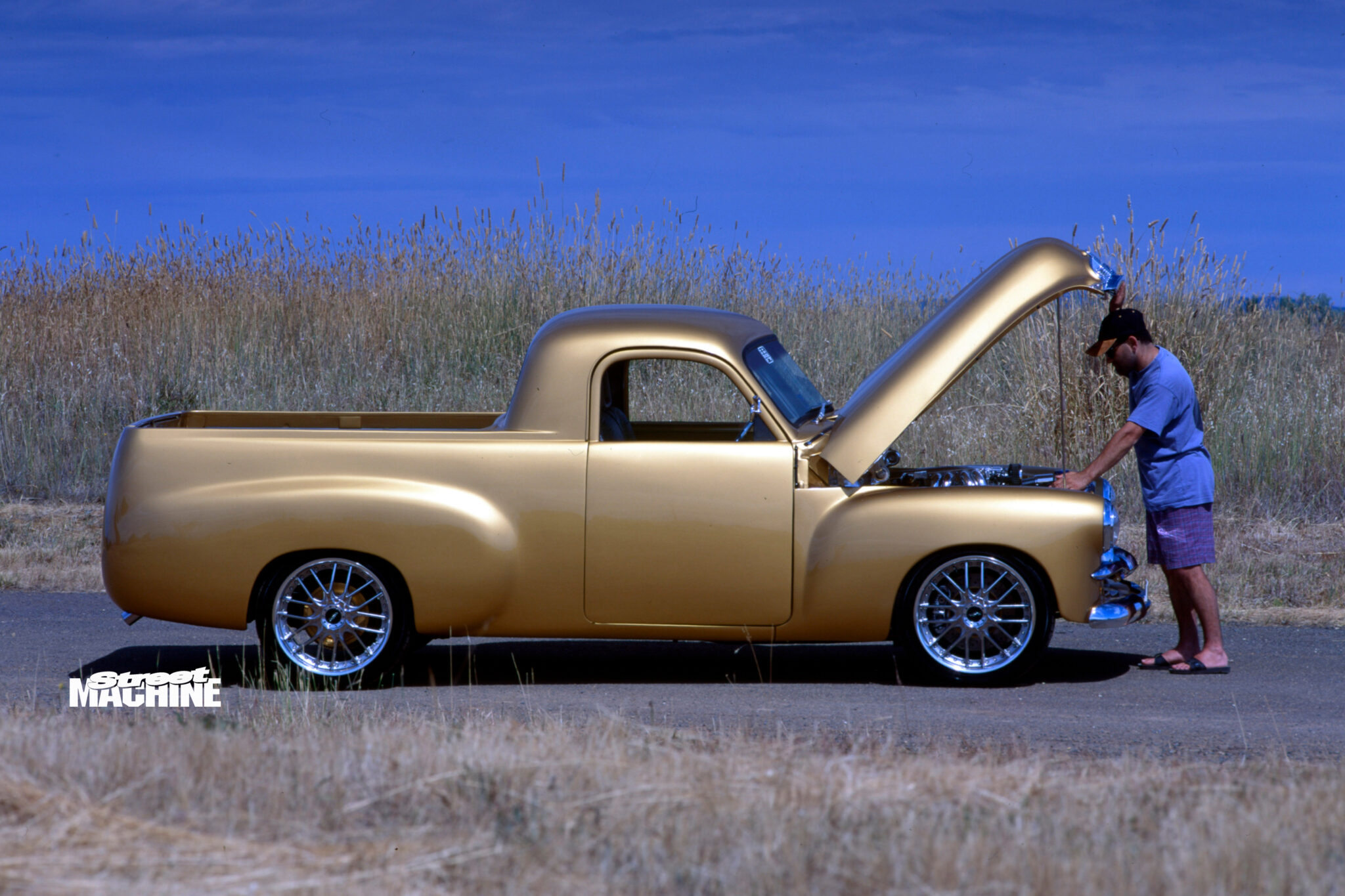
It was a long-odds bet that this car was ever built in the first place. In fact, owner, John Coultis had more chance winning Tattslotto. To hear John tell it, he deliberately avoided checking out potential FJ utes, which is a fairly good way. of making sure you never build one. “I always had a pretty good idea of what I’d do with an FJ ute if I ever found one, but I also knew that it was going to cost a truckload of money,” says John, who twirls spanners in Sydney, nine-to-five. “So I decided never to go looking for one. That way, I was never going to have to explain to my wife where the money was going.”
First published in the October 2001 issue of Street Machine
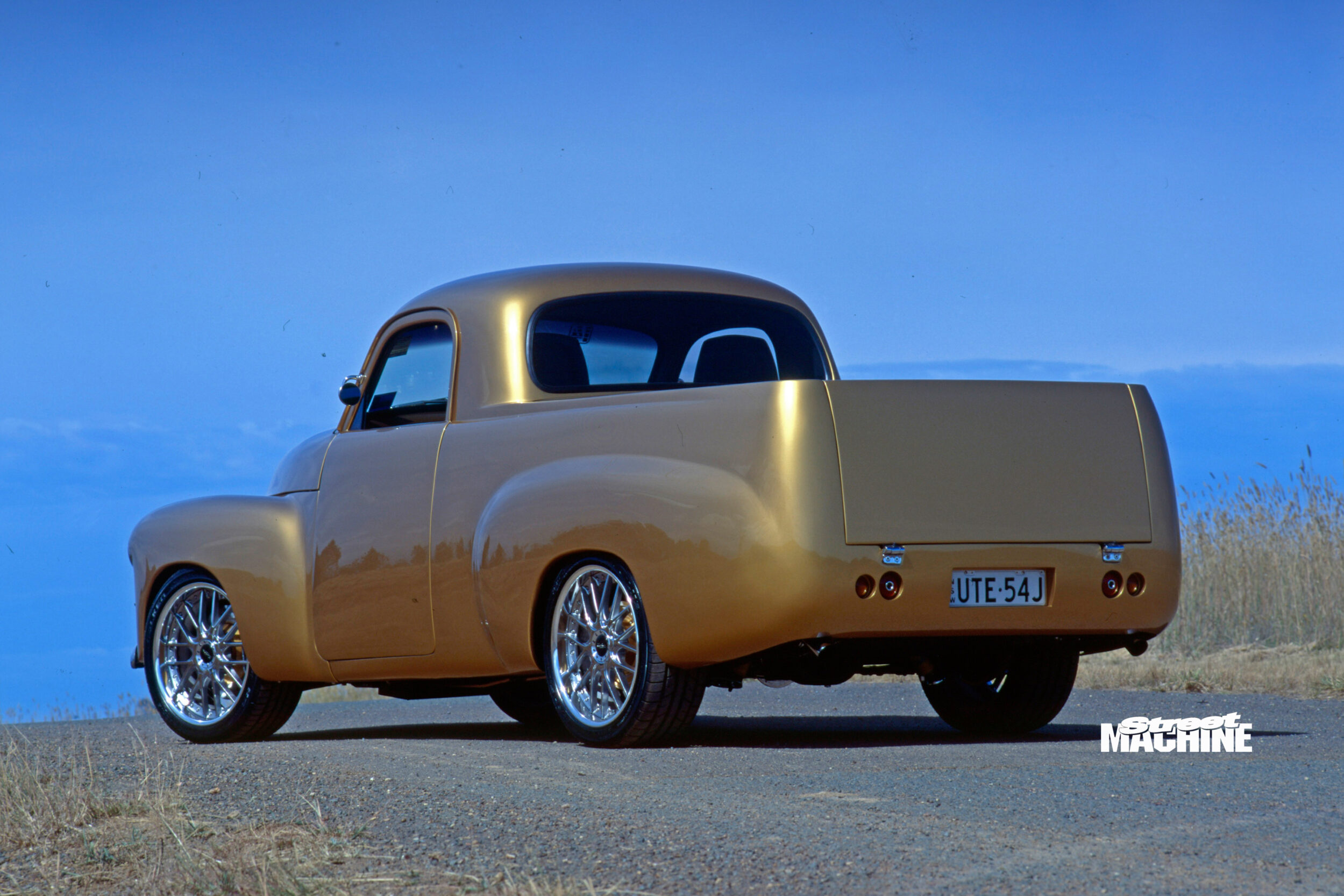
In the end, though, fate took over. Instead of John finding the FJ, it found him. “One of my customers spotted this ute for sale at a swap meet,” recalls John. “He grabbed the guy’s phone number and dropped it over to my house, thinking I might be interested.” Although initially hesitant, John eventually thought maybe this was meant to happen after all.
John was convinced he was never going to get involved in such a project, never ever. But figuring fate couldn’t be ignored, he picked up the phone and called the owner…it took just 15 minutes for John to talk himself into the project. Turns out the ute was owned by a country plumber who was using it as his everyday work truck.
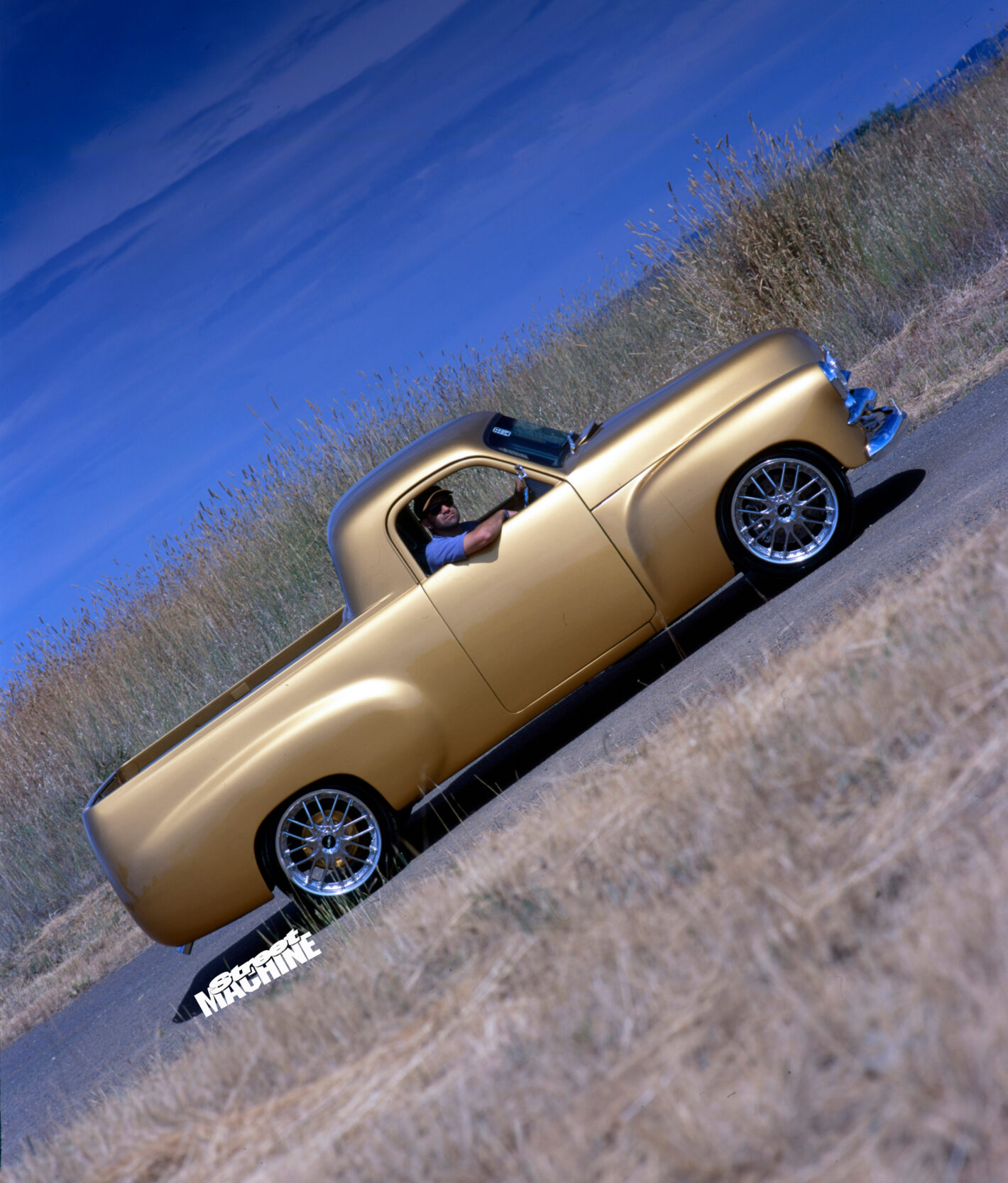
Being a country truck, and a hard-working hack at that, there was the usual amount of panel damage, but once the sandblaster had done its job, the naked shell only revealed a small amount of rust in the lower sill panels. On the downside, there was some pretty severe body damage in the rear quarter and around the original filler neck location, but surprisingly the tray was in excellent nick.
“The tailgate was spotless,” declares John, “It was in really amazing condition overall. I mean, I’ve seen better cars, but I’ve seen a hell of a lot worse!”
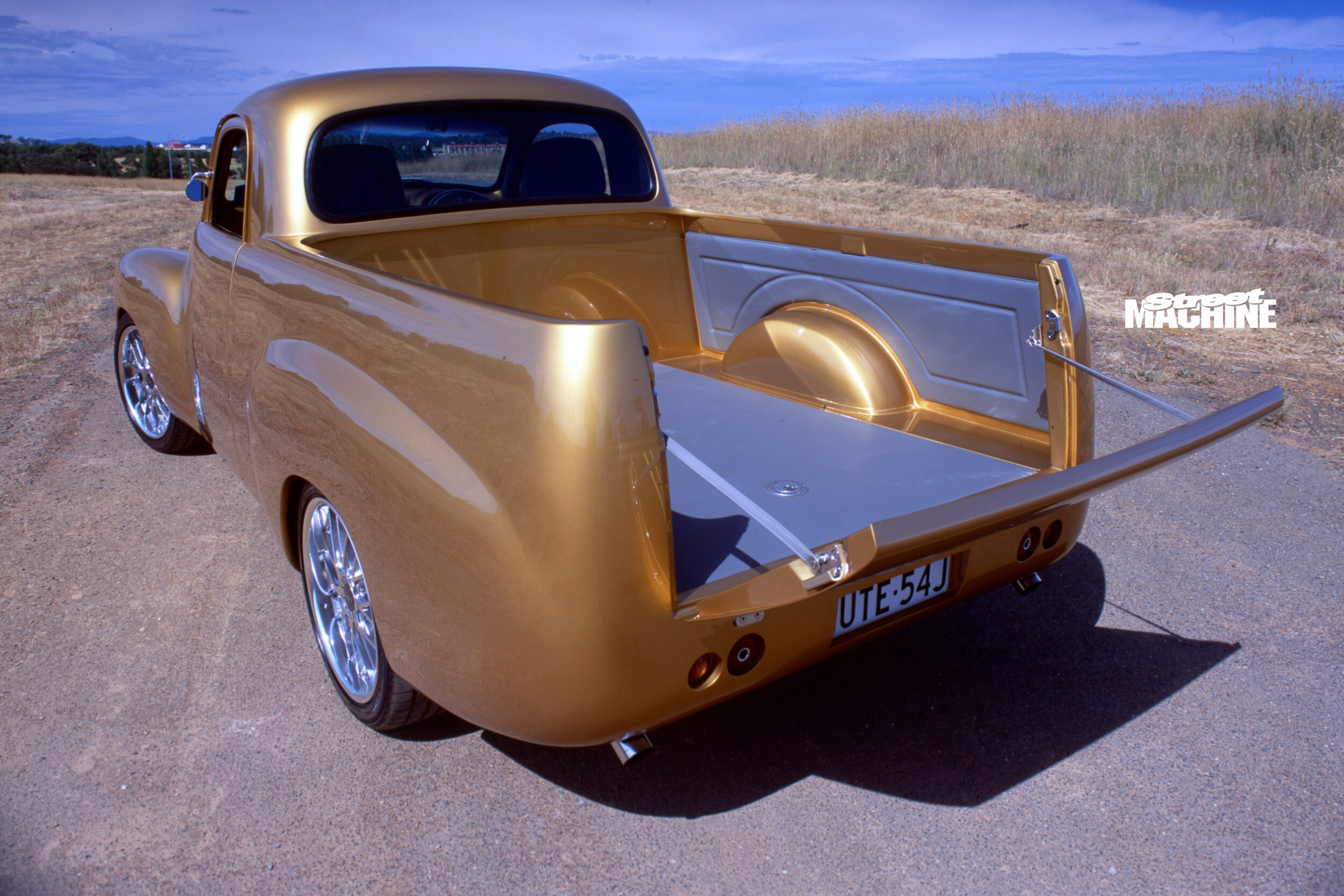
While the body wasn’t a bad starting point, the mechanicals were shot. A very tired 161ci red motor lived up front, bolted to an equally weary three-speed Trimatic. The whole catastrophe had two weeks rego remaining. So, John did what any self respecting street machiner would have done — drove it for two weeks…and then tore it down to its very last nut and bolt.
With the shell stripped to within an inch of its life, Robbie Schumak (from Maroubra Auto Refinishers) began the task of ironing out all the dings along with smoothing out a few ‘Holdenisms!’. To help further smooth the body, the filler cap was transferred to the tray (atop the new 80-litre alloy drop tank), rear inner guards were radiused and the front indicators and rear lights were frenched.

Normally, cars with shaved door handles rely on solenoids for access. Instead, the team fitted remote control power-windows. Therefore, when you want in, simply use the control unit to wind the window down, and then reach inside for the handle. One-piece door glass was used by making a new window run using a trick carbon-fibre panel.
Blending modern design with Australian motoring history, the beaver panel was rolled, the front bar smoothed and the over-riders removed. Gone too are the funky rubber pads originally fitted to the FJ’s rear wheel arches. One item that remained though, is the original FJ’s two-piece front screen. Although it’s now butt-joined — doing away with the rubber separator strip.
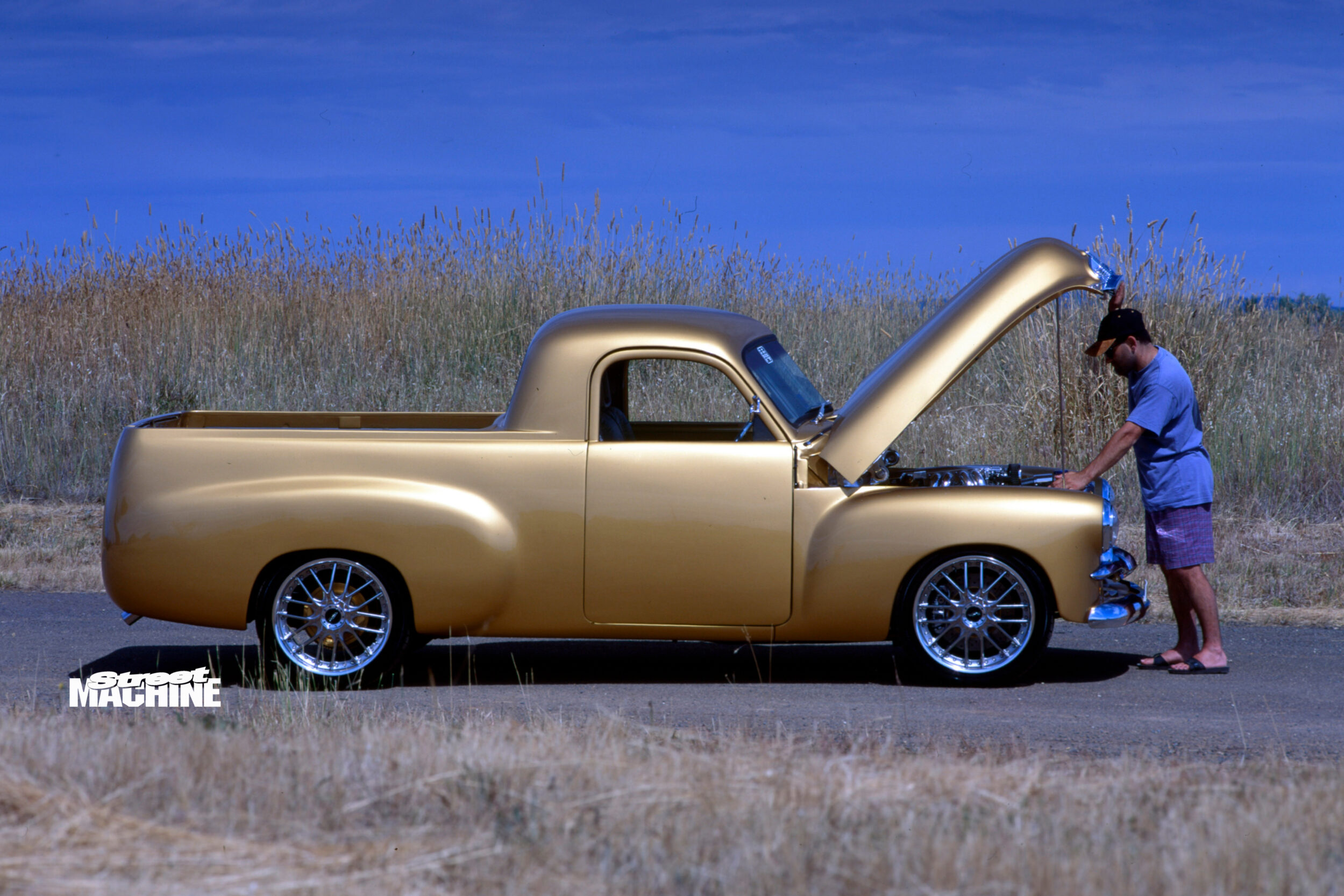
From there, it was a relatively simple matter to blast multiple coats of Standox two-pack over the whole kit-‘n’-caboodle, in a beautiful, classy, custom-mixed gold.
Back in 1954 Holden’s engineers never envisaged their beloved FJ would be housing a grunty small-block Chev. To bring the chassis’ strength up to scratch, it’s been boxed in all the right places and a HR front cross-member mounts the bigger mill providing a disc brake, ball-joint front end.
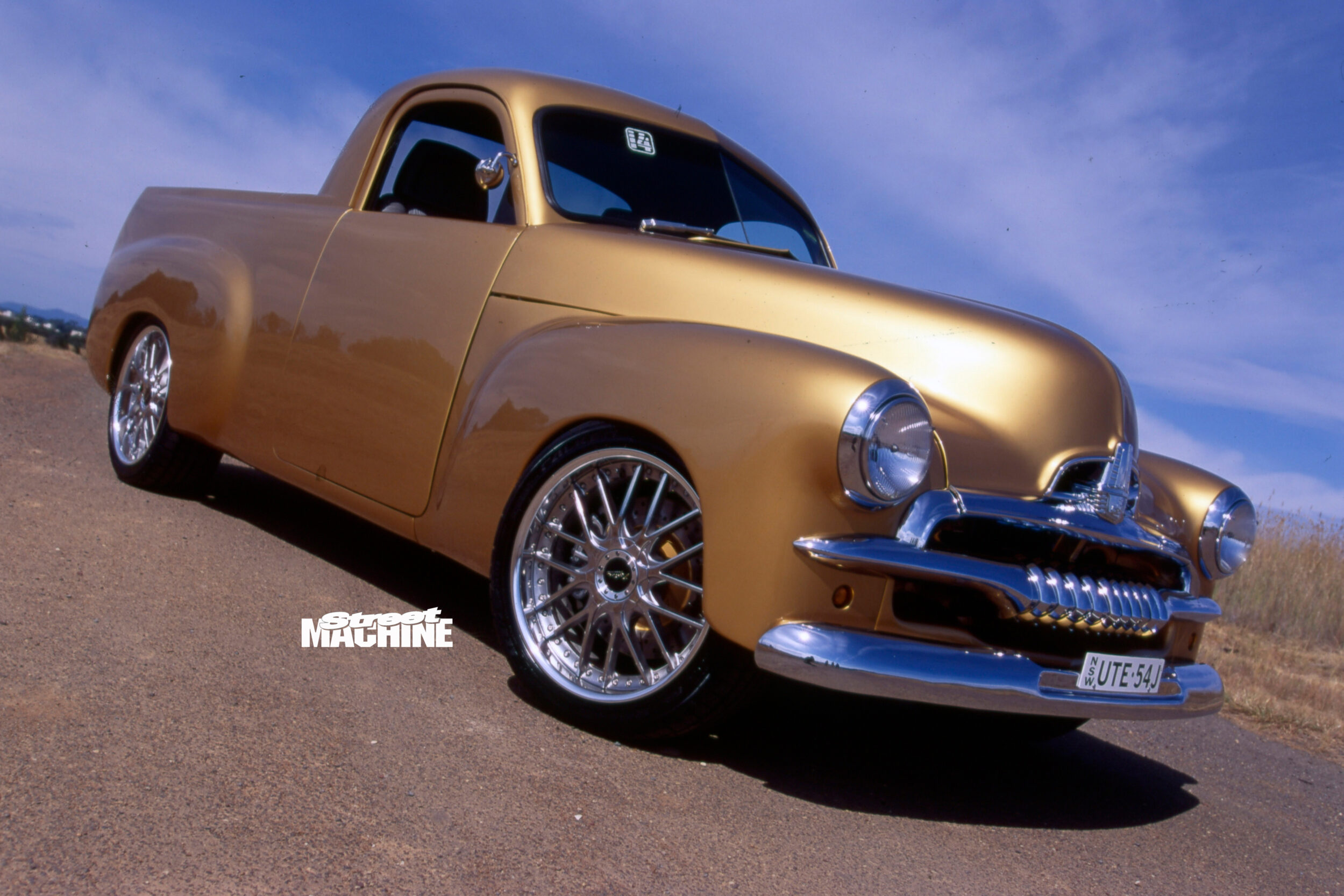
But things aren’t as simple as they appear, and the whole mechanical set-up is equal parts imagination and sheer genius. For a start, the Commodore steering column manipulates a power rack and pinion set-up from — would you believe — a Ford Laser! Lovells coils support the front end, while reset HR leaves take care of the rear. Urethane bushes are everywhere and trick, big-dollar Bilstein shocks are fitted at each corner.
“You’d have to be in need of vision-correcting eyewear not to spot those pure Japaneses, rice-racer 18×8 Zepter wheels filling all four guards to near bursting point. However, it’s what’s behind them that’s equally eye-catching, No, I’m not talking about the attractive stainless steel lines, but the sheer size of those monster brake rotors — dinner plate-sized 330mm, cross-drilled, slotted DBA discs, clamped by humungoid, HSV-spec, four-spot calipers no less.
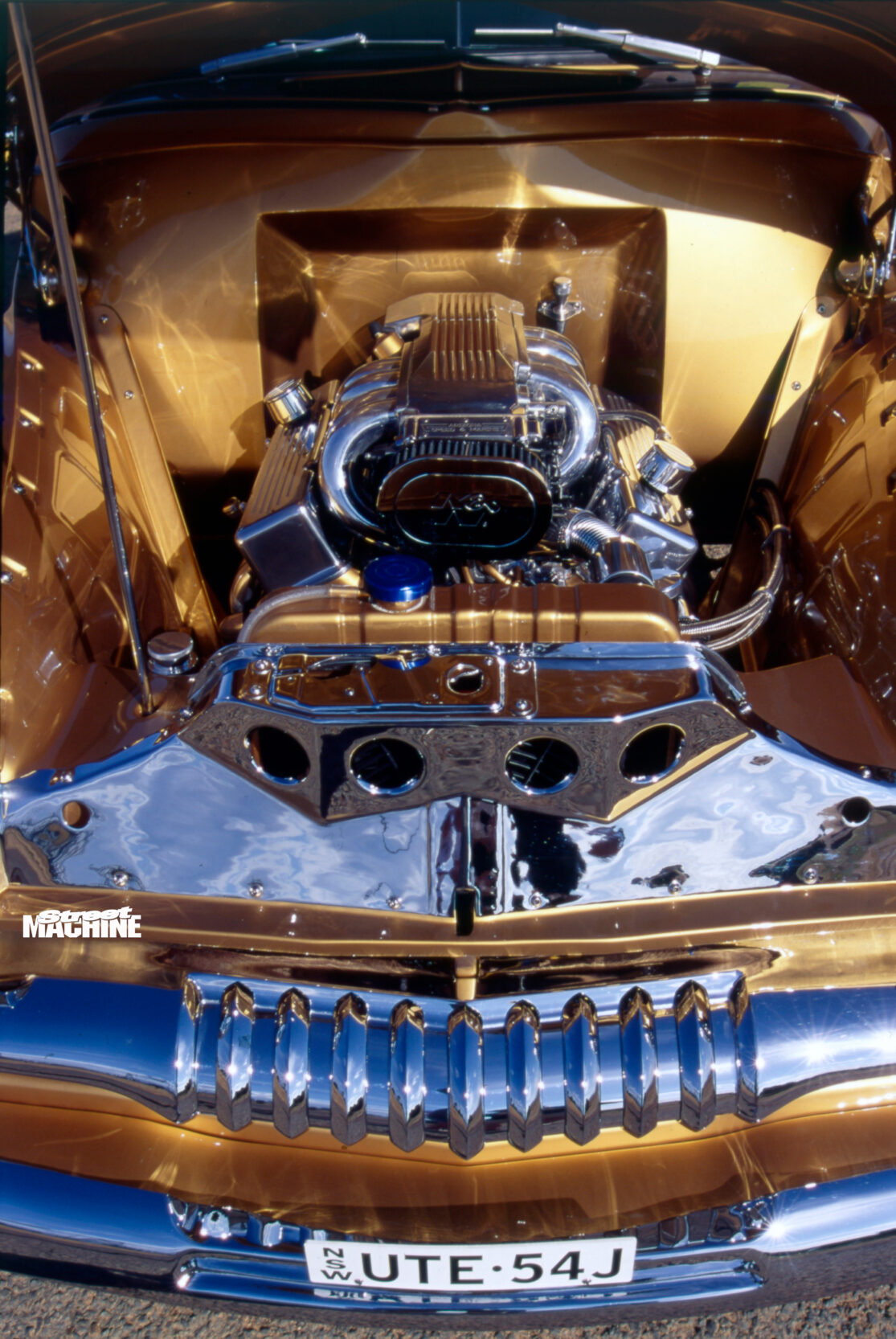
A combo that does it for most people, I believe. This up-to-the-minute wheel, tyre and brake package captures the whole essence of John’s philosophy towards the FJ. He liked the style and lines of the classic Holden, but wanted cuttingledge dynamics and modern accessory aesthetics. The resulting mix of eras introduces a new dimension to style and a car to ignite the senses.
Down the back, John’s stuck with the big, three-inch-wide GTHO finned drums that came with the Ford nine-inch (what else would you use!). Powering the whole brake package is a Toyota Hi-Ace master cylinder — now mounted under the dash to keep the engine bay schmick and clean.
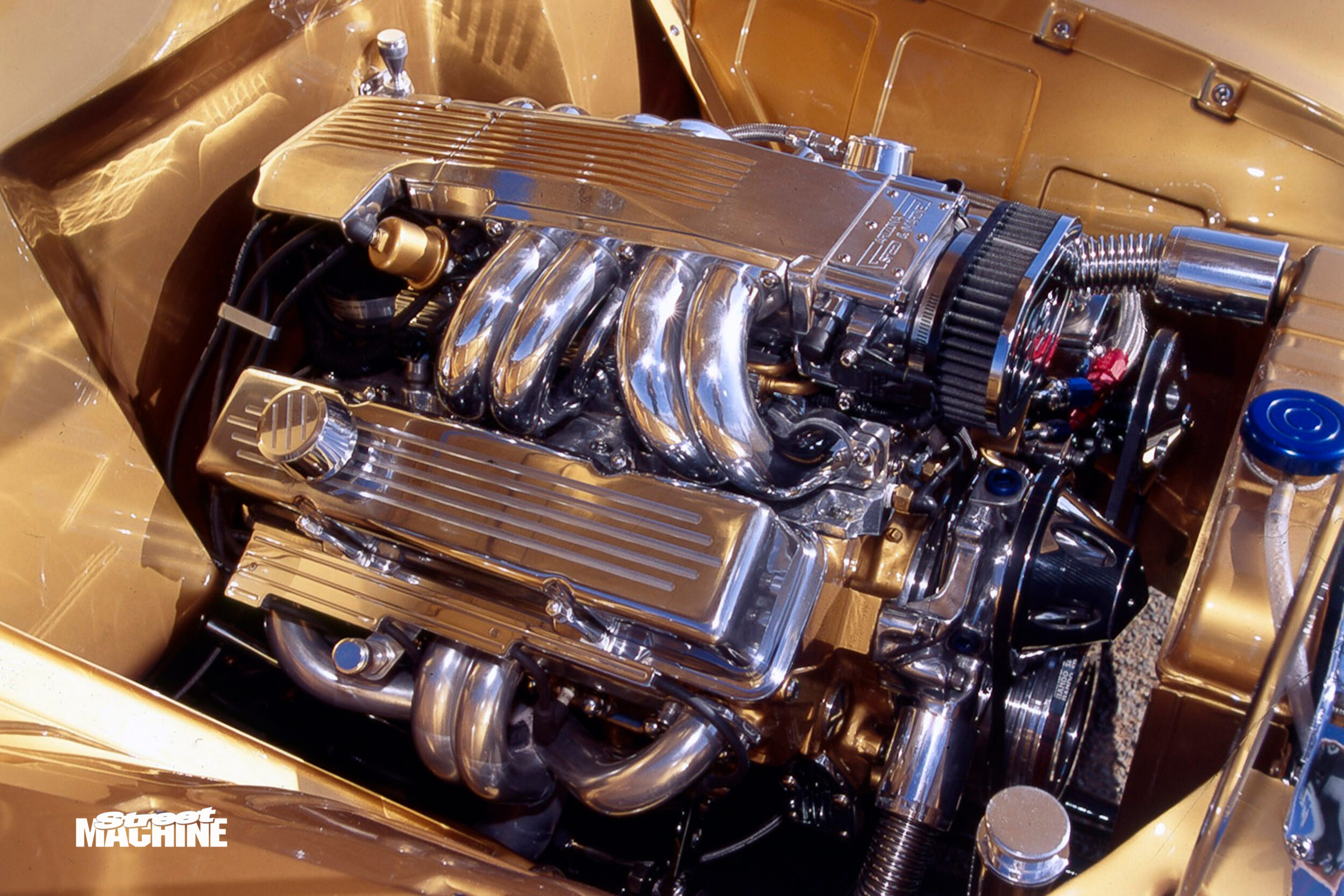
What John didn’t want to build was a car that Ne couldn’t use, so the TPI 305-cube small-block has remained relatively standard apart from a few trick bits (including a high flowing Arizona Speed and Marine throttle body) and plenty of careful assembly and balancing. Just as GM intended, it’s been rebuilt to run on unleaded, which gives John the option of running the good, high-octane, premium stuff.
There’s a baby Competition Cams bump-stick on board, the inlet manifold features fatter runners, there’s a Mallory high-volume oil pump, a Bosch electric fuel pump, MSD ignition and a two-inch polished stainless exhaust, but that’s about it (which all sounds good to us).
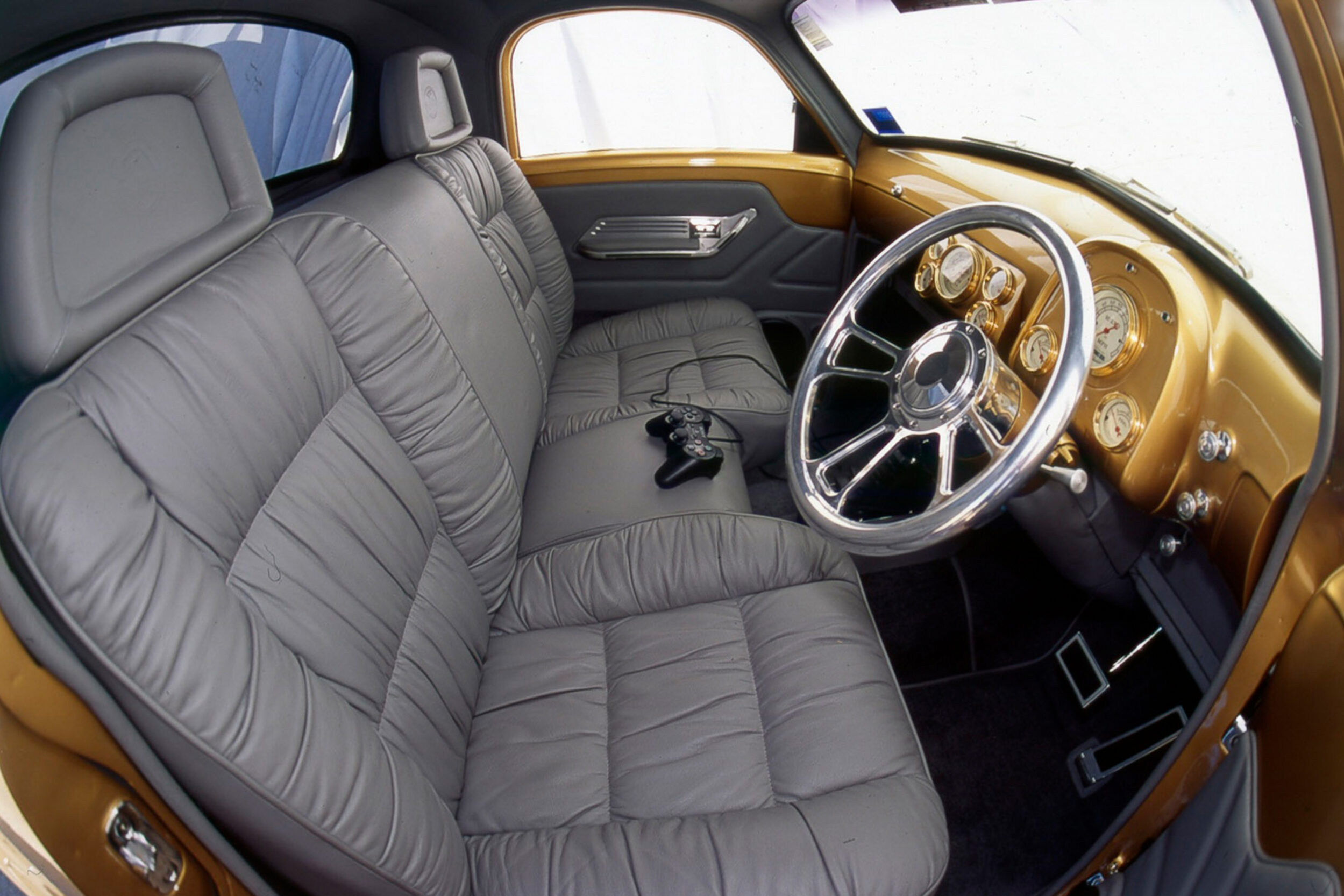
Even so, with lots of strong torque moving around to what amounts to about 1200kg (all up) of metal, there’s still strong performance for the taking. This adequate power is passed back to a TH700 tranny that was lifted from the same dead Camaro that donated the engine.
If you can get close enough (the ute draws a bit of a crowd whenever it’s parked) you’ll spot an all leather Intetior that retains the bench seat and the basic dash layout, although gold-rimmed VDO Classic gauges are now used throughout. Inside, you’ll find a killer audio system, which includes a fold out TV screen head unit and a Sony Playstation. Paul and Dave from D and A Trimming get the credit for the job that’s tidy and doesn’t spoil theotherwise clean lines of the finished product.
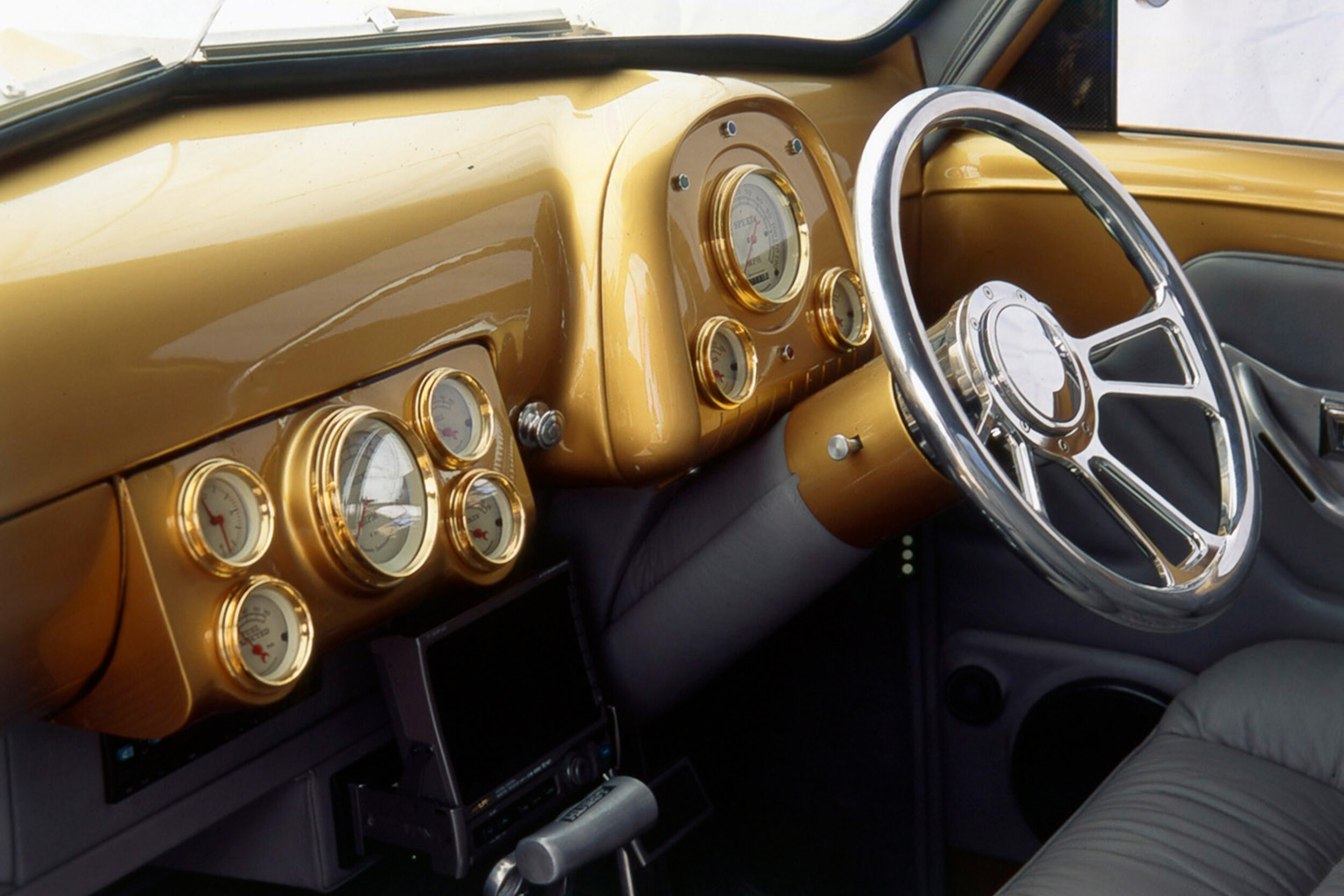
The other bloke to thank is demon car cleaner and polisher, Greg Jolly, who earns his keep making sure the Jay is always looking super sweet.
In fact, Greg thought he was in for an early retirement when John sold his hot-rod a few years ago.”I thought, great. No more car cleaning. Then he goes and builds this!” exclaims Greg Still, it could be a lot worse, because after showing the car for a couple of seasons, it’ll be cruise, cruise, cruise in this stunning piece of local history.




